 |
Be seeing you...
Capt Wardrobe - July 2021
|
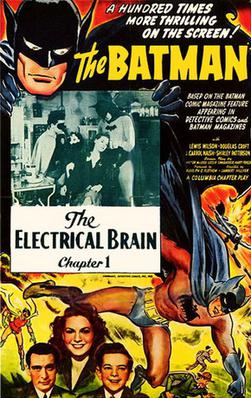
|
 |
Be seeing you...
Capt Wardrobe - July 2021
|

|
|
Sickening Propaganda spews from GB news - as they promote Covid ambient air quality machine, Kromek - which sounds, bizarrely like Orac, from super kitch 80's UK show Blakes 7 - or some other sci fi dystopian technology...
Of course this system tests the ambient air quality,
an omnipresent biowarfare defense system continually scans the area,
for a virus that needs warm wet human bodies to incubate in...
make any sense to you?
me neither
but you can bet this system, will be place in action in high foot fall areas
throughout the cities - throughout the globe -
alongside the now ubiquotous zonal color coded psy war threat management (mind control)...
|
|

|
We will have Minority report real time air quality systems
barking out warnings over huge Plasma hoardings.
These massive displays will be dousing an unsuspecting public
with ambient EMF radiation - and the frequency will be making people feel
a bit fluey...
|
|
|
This is our future unless you stop it:
A global biometric shopping mall
In this clip from the movie Minority Report Biometrics
works the crowd to scan eyes & beam them personalised advertising.
The advisor to this film, Peter Schwartz now works for Sales force
"Prior to joining Salesforce, Peter was co-founder and chairman of Global Business Network. He is the author of several works. His first book, The Art of the Long View, is considered a seminal publication on scenario planning. Peter has also served as a script consultant on the films "The Minority Report," "Deep Impact," "Sneakers," and "War Games."
|
|
As the public gawp at the latest warnings and directions on their smart devices,
all hooked up to oh so lovely & superfast 5g - which is, yet another gradualistic level of bio-manipulation to add to the over all flu-like symptoms
Just like they make those smells...the aromas of bread baking, or mince pies at Xmas,
in the supermarkets to make shopper slave consumer-bots buy shit they dont need...
The public will be sold fear & the obedience button will be pressed in the unsuspecting publics prone brain.
but it doesn't stop there...
|
|
|
|
Note; DELTA THETA ALPHA BETA BRAINWAVES [left] screenshot from From PSYOP to MindWar:The Psychology of Victory [pdf]
notes could be used in conjunction with media broadcasts inclining an audience to alertness to passivity.
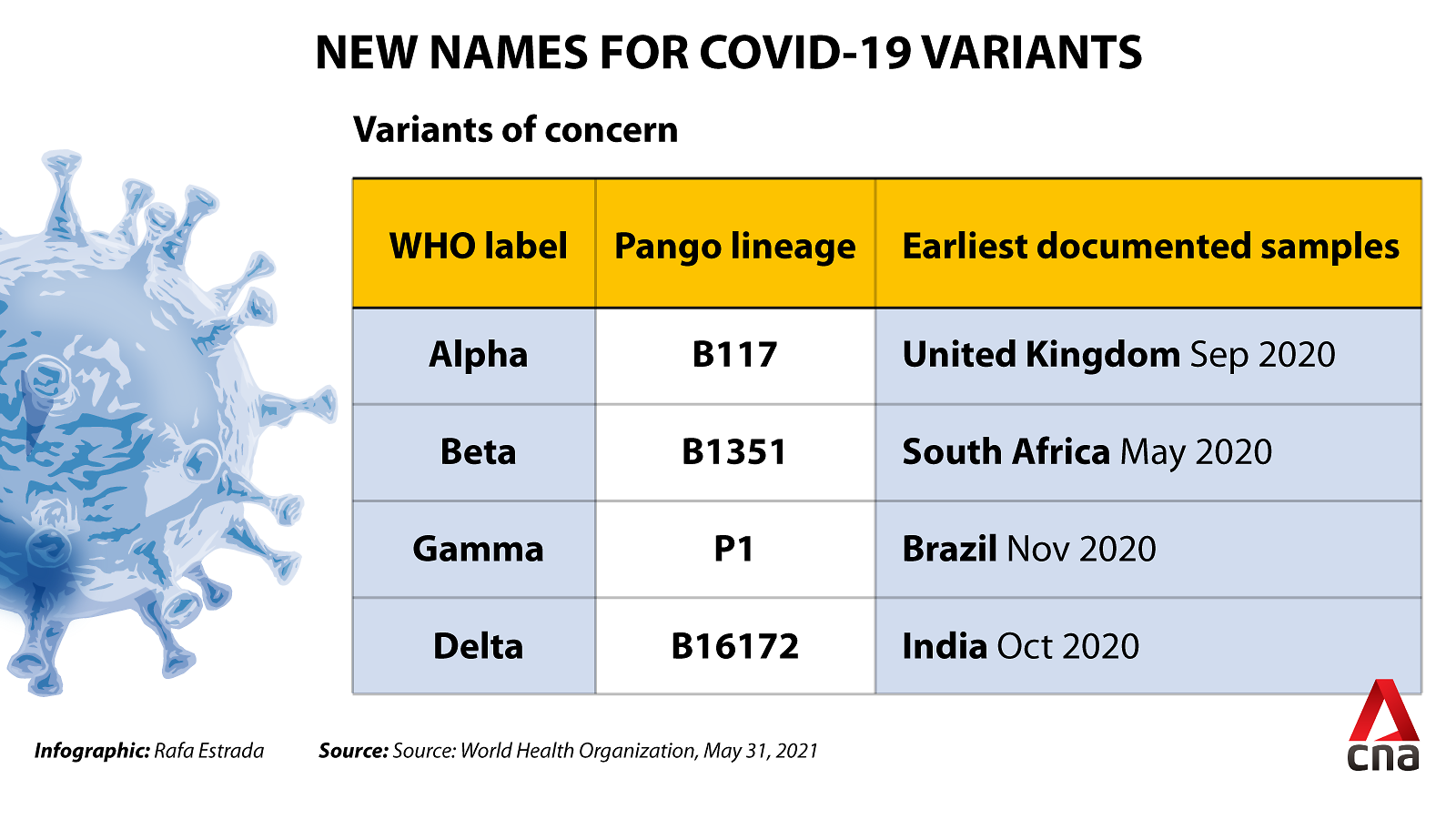 |
|
Flashback - questions asked back in 2004 |
note: This is before the concepts of 5g, The internet of things / bodies / minds The following is a slightly updated almagamation of 2 commentarys from my old website - Down with Murder inc - control matrix pages |
In July 2004 the then Home secretary David Blunkett introduced War criminal Blair to the UK police conference... he used the phrase 'prison without borders'. and went on to introduce new plans to tag 5000 criminals under a GPS securitys watchful eye.
The news media belts out the false premise that a criminal watched is a criminal stopped...
Think about it... there are more cameras per square yard in this country than in any other...yet the powers that be tell us that crime is still rising. Wouldn't this suggest to any fool, that the cameras just ain't working! that indeed people just get used to them and go for it big style...anyway. I, for one, have never understood how a camera stops anyone doing anything... ...and there-in lies the reason why this is all being done...
The element of fear driven by crime is being used within this technology in order to bribe the population to take part in a social experiment, and still the proposals are made, only in this ultra-modern present instead of visible cameras looking over us taking a quiet piss in an alleyway, the cameras are to be hidden in the sky...we are to be chipped, [for our own safety, of course].
To see what the near future holds for us is to turn to the DNA database. Something which i fear is the extension of the demographic tabulating Hollerith machine, which was used to very sinister ends by the Nazis in WWII...counting, labelling people miscreants thus enabling them to experiment on them & kill them...
[this should be a lesson to us all- ALWAYS LIE ON QUESTIONAIRES- polls etc]
We are constantly reassured that this biotechnology is to be used as a means to find the cure for cancer, AIDS, Alzheimers etc... but where is this cure ? it must be 20-30 years and the promises are STILL coming!
|
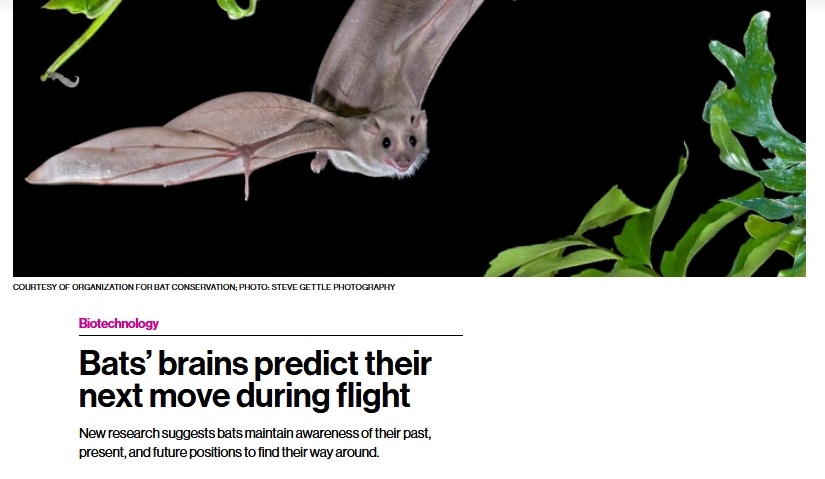
|
Natural GPS.
Bats + Genetic engineering = Covid19 = Mrna gene therapy =
Imagine a
vaccinated public of hive minded Satellite tracked, real time monitoring via their DNA
"
Being able to chart their position through time with this natural GPS system is one of bats' greatest survival tools, helping them locate food and evade predators.
"The bat must plan both locally in time, and into the future, to be successful in its hunting behaviors," says Melville Wohlgemuth, a researcher at the University of Arizona's Batlab. "These are brain processes that are relevant to our lives, as well."
Examining species other than our own has long been a hallmark of neuroscience, and studying the hippocampus of bats could give scientists more insight into how certain diseases affect our own brains.
For example, learning more about bats could change how we view Alzheimer's disease"a brain disorder that slowly destroys cognitive functions and memory. Alzheimer's patients have trouble intuitively navigating new routes or new locations, even when they've encountered them a few times.
|
|
The Bat1K genome consortium unites bat biologists (>148 members as of writing), computational scientists, conservation organizations, genome technologists, and any interested individuals committed to a better understanding of the genetic and evolutionary mechanisms that underlie the unique adaptations of bats.
Our aim is to catalog the unique genetic diversity present in all living bats to better understand the molecular basis of their unique adaptations; uncover their evolutionary history; link genotype with phenotype; and ultimately better understand, promote, and conserve bats.
Here we review the unique adaptations of bats and highlight how chromosome-level genome assemblies can uncover the molecular basis of these traits. We present a novel sequencing and assembly strategy and review the striking societal and scientific benefits that will result from the Bat1K initiative. |
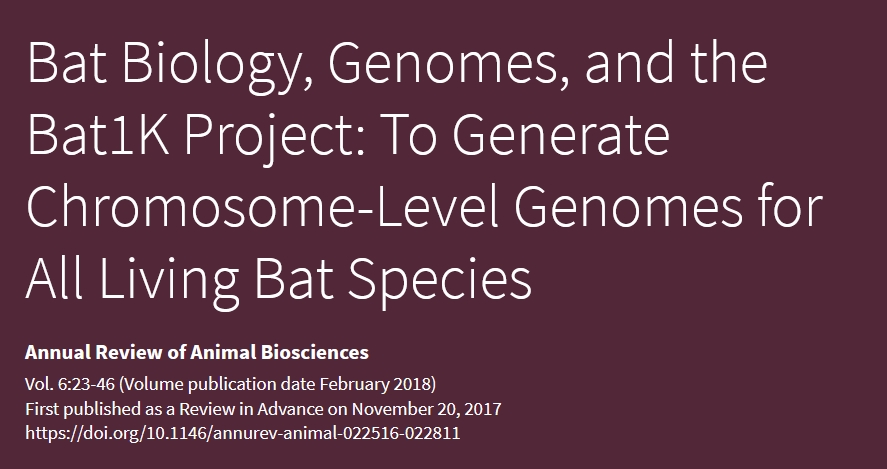 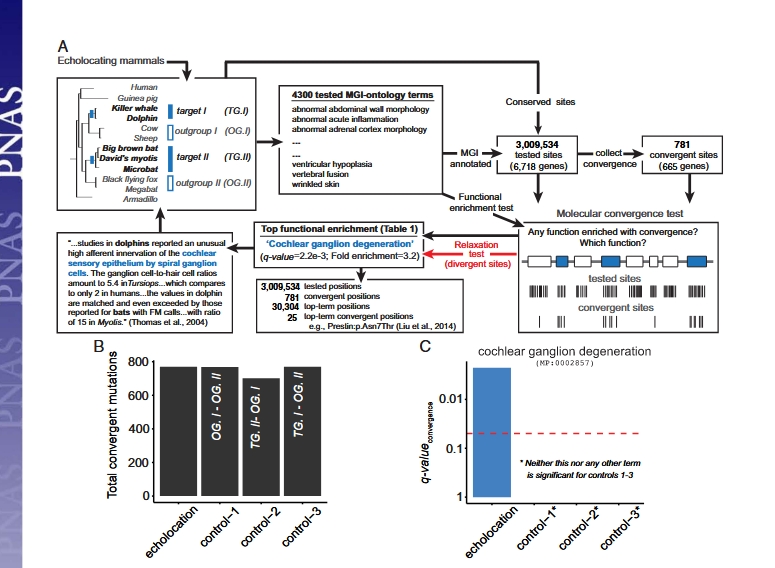 |
|
what have they been up to?
They have been designing diseases that can be patented and propogated in order to keep us in line...
the same behavioristic model that is used with Cameras and tracking is to be introduced very soon via Micro-electronic machines [MEMS / nano materials], into cells & viral bacteria
Could Magnetic resonance imaging be experimented with, to be used via Huge advertising plasma hoardings...?
Indeed this technology- a walk through scanner has been utilised to check for weapons outside nightclubs.
This could prove to be Orwells two way mirror to your soul...
Future use of F-MRI [a magnetic resonance imager that reads brain activity in real time] will be an open x-ray to you brains activity...such as the current dreams of neuro marketing...which is cutely referred to as 'pressing the buy button of the brain...
if this technology can be used to press a 'buy button'... what other buttons can be pressed? the fear button? the docility button? the death button?
|
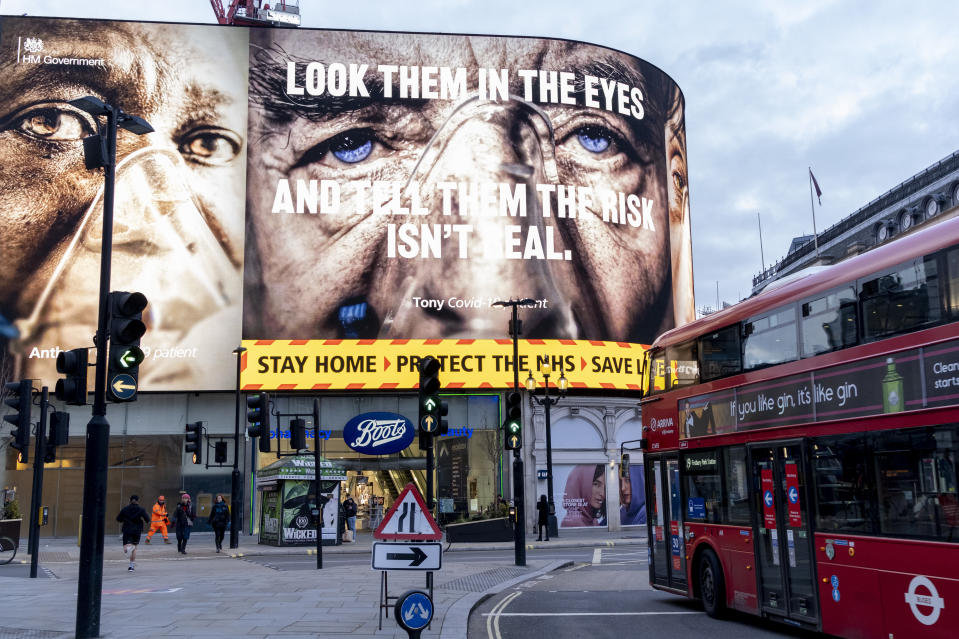 |
Vast waves of this energy will flow from advertising screens in malls, and along highways, [added 2021;] as part of all encompassing Smart city 5g antennea networks, and could well be be used as a immune system debilitator, which will allow the influence of mood controlling via induced feelings of sickness/well-being... feelings in which even an incremental amount give rise to a feeling of being under the weather, or 'not myself today'...
and in the tradition of Delgado & Skinner, if one makes people feel slighly ill during certain activity, ooh say, like crossing a geo-fencing boundary, they will be far less likely to continue...
it's the usual suspects
It's all connected
Border control - HAARP - Radar - Satellite Communications / Global positioning systems, Privatized intelligence / Pharma / biotech companies...genetic wizards...
Will people walking through Shopping malls & driving along freeways be bathed in FMRI, constantly urging us to feel a certain way? constantly scanning us for 'abnormalities' & labelling as 'terrorists'?
|
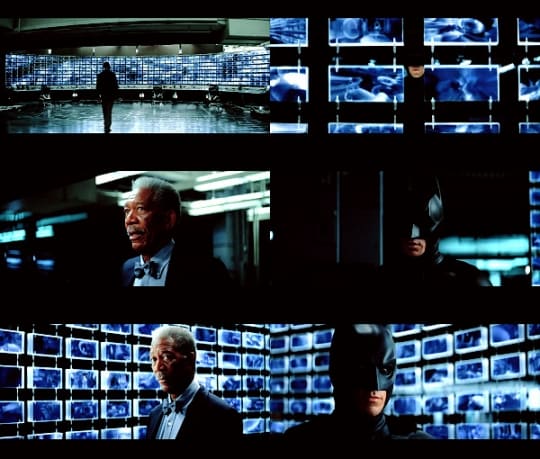 Bruce Wayne's mass surveillance system in The Dark Knight.
|
Privacy themes in Dark Knight and Dark Knight Rises
In The Dark Knight, Bruce Wayne/Batman (Christian Bale) has arms inventor extraordinaire Lucius Fox (Morgan Freeman) build a mass surveillance system to spy on Gotham City's citizens using video and mobile phone technology. Despite Fox threatening to quit over the system because it violated innocent citizens' privacy, Wayne argued that it was necessary to catch Joker. In the end, Wayne destroyed the system.
The argument that widespread surveillance"and thus infringing on people's civil liberties"is necessary to stop terrorism is very common. That argument is the basis for the more than 1.3 million law enforcement requests each year for US residents' cell phone records. It's why private companies like Verizon, AT&T, and Google have to turn over your personal information when law enforcement asks for it. It's why the National Security Agency (NSA) is currently building a $2 billion surveillance center to intercept the communications of every American. - Sarah Downey - from 2012
|
|

|
The future [see hidden present] systems of control are preparing the human race for a dependance on disease...a normality virus, with which they can hold the big stick of disease on any human[s] that need 'democratizing' in the war on terror...it is economic, phrma-based warfare...
Disease patenting? Cancer patenting? Disease MANAGEMENT ?
disease used as the punishment for subversive/militant thought?
will the herd evolve via this behaviorism into
not wanting to rebel because it makes them feel ill?
Will Orwells 2 - way TV be an fMRI scanner?
Could a system of Optical satellite tracking, 3d radar, RFID, Bluetooth & Brain-interface technology
come to resemble a form bio-tech remote viewing?
Will this spy network be able to hack into your brain via a secret backdoor and sense what you sense?
Is it just my imagination?
will "the central control" (added 2021) be located via the DNA database - used as you would a telephone directory
The upgradable nano-scale
RFID / MMEA chip will be your passport to goods and services
|
|
example: normal surveillance: find target = spy & view target |
new concept: find target = locate window, spy and view through target |
|
Any human will be the 'window'
The system admin can hack into anyones braincode
- via electrical signal to and from the brain.
The brains signal is then decoded and remotely watched as a hologram.
The death of privacy - potentially using anyone as a spy.
With the possibility of 'secret backdoor technology' being written into this Brain Machine Interface,
Memory and perception could also be altered, with the possibility that ultra secrets could be stored in an unsuspecting citizen.
|

|
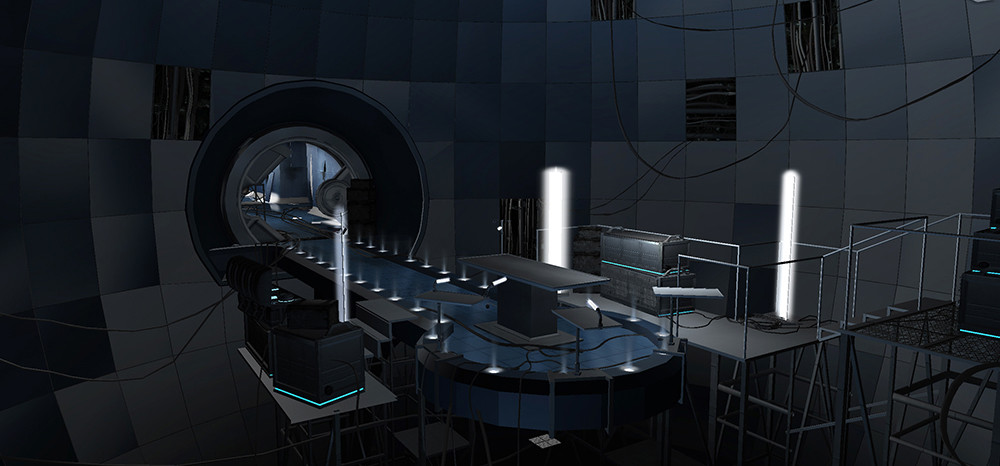
X-Men - CEREBRO
Use and function of the device
Cerebro amplifies the brainwaves of the user. In the case of telepaths, it enables the user to detect traces of others worldwide, also able to distinguish between humans and mutants. Depictions of its inherent strength have been inconsistent; at times in the storylines it could detect mutated aliens outside of the planet, when at others it could only scan for mutants' signatures in the United States. It is not clear whether it finds mutants by the power signature they send out when they use their powers or by the presence of the X-gene in their body; both methods have been used throughout the comics.
Using Cerebro can be extremely dangerous, and telepaths without well-trained, disciplined minds put themselves at great risk when attempting to use it. This is due to the psychic feedback that users experience when operating Cerebro. As the device greatly enhances natural psychic ability, users who are unprepared for the sheer enormity of this increased psychic input can be quickly and easily overwhelmed, resulting in insanity, coma, permanent brain damage or even death.
The one exception has been Magneto, who has been said to have minor or latent telepathic abilities as well as experience amplifying his mental powers with mechanical devices of his own design.
Wikipedia
|

Vital signs: Track & Trace: Monitoring health Satellite phone tracking flashback
wayback when - many of The US Army Spec Ops group / Rangers etc ...were chipped with
The program aims to develop algorithms that use raw data from smartphone sensors to enable continuous and real-time assessment of warfighters' health status, identifying latent or developing conditions and diseases"
Darpa have developed real time bio data collection & analysis
|
smartphone collection?
|
|
|
|
Healthcare monitoring of every citizens DNA via a command & control center that resembles NORAD...
[see interview top right]
|
|
|
The following is relevant &
interesting in the context of mapping environments
The "system" has been weening us onto total surveillance via camera,
body heat /movement tracking / brain scanning
|
|
DARPA announces researchers to exploit infrared spectrum for understanding 3D scenes
|
"The Invisible Headlights program aims to eliminate this vulnerability by discovering how to transform the ambient thermal light present in all environments into a totally passive 3D sensor accurate and fast enough to support autonomous navigation. "
The following research teams will address these challenges:
+ Arete Associates, Northridge, California, will perform virtual analyses to understand the ambient spectral and polarimetric infrared environment and develop low-contrast-capable 3D vision algorithms.
+ Kitware, Inc., Clifton Park, New York, will use customized, multi-band hyperspectral infrared cameras combined with artificial intelligence and machine learning algorithms to estimate local 3D scene structure and semantics for navigation.
+ A team led by the Massachusetts Institute of Technology, Cambridge, Massachusetts, is working to scale superconducting nanowire single photon detector (SNSPD) technology into a very low noise infrared sensing array.
+ Purdue University, West Lafayette, Indiana, is developing new types of ultrafast, spin-based sensors and 3D vision approaches that exploit properties of the ambient thermal environment.
"These teams are pursuing innovative approaches to exploit the infrared spectrum," said Joe Altepeter, Invisible Headlights program manager in DARPA's Defense Sciences Office. "They are exploring ways to capture more scene information using new devices, improved algorithms, and increased measurement diversity."
|
|
The superconducting nanowire single photon detector (SNSPD)
3D imaging - -
“The resulting 3D optoelectronic architectures are particularly attractive for photodetection systems that require a large field of view and wide-angle antireflection, which will be useful for many biomedical and military imaging purposes,” said Muhammad Ashraful Alam, the Jai N. Gupta Professor of Electrical and Computer Engineering.
Applications
Biological imaging
Quantum computing
Deep space communications
|
|
Normally, our vision is limited to a very small portion of the electromagnetic spectrum. Thermal energy has a much longer wavelength than visible light. So long, in fact, that the human eye can't even see it, just like we can't see radio waves.
With thermal imaging, the portion of the spectrum we perceive is dramatically expanded, helping us "see" and "measure" thermal energy emitted from an object. Unlike visible light, in the infrared world, everything with a temperature above absolute zero emits heat. Even very cold objects, like ice cubes, emit infrared. And visible light doesn't affect the thermal world, so you can see equally well in highly lit and totally dark environments.
The Electromagnetic Spectrum
The higher the object's temperature, the greater the IR radiation emitted. Infrared allows us to see what our eyes cannot. Infrared thermography cameras produce images of invisible infrared or "heat" radiation and provide precise non-contact temperature measurement capabilities. Nearly everything gets hot before it fails, making infrared cameras extremely cost-effective, valuable diagnostic tools in many diverse applications. And as industry strives to improve manufacturing efficiencies, manage energy, improve product quality, and enhance worker safety, new applications for infrared cameras continually emerge.
How Does an IR Camera Work?
Infrared Energy Detection
An infrared camera is a non-contact device that detects infrared energy (heat) and converts it into an electronic signal, which is then processed to produce a thermal image or video, on which you can perform temperature calculations. Heat sensed by an infrared camera can be very precisely quantified, or measured, allowing you to not only monitor thermal performance, but also identify and evaluate the relative severity of heat-related problems.
|
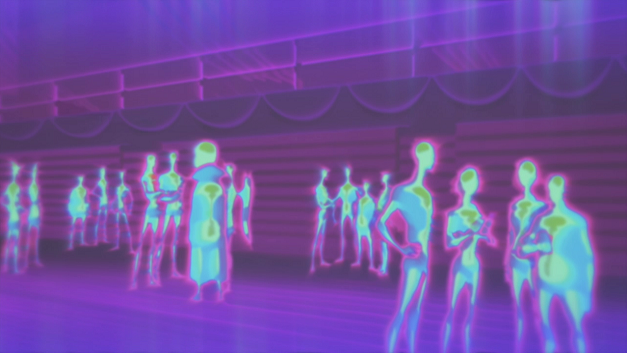
IR therapy has been developed that does not actually require an external power source, such as IR-emitting materials, and garments that can be powered by body heat alone. Another area of interest is the possible involvement of solar IR radiation in photoaging or photorejuvenation as opposites sides of the coin, and whether sunscreens should protect against solar IR?
A better understanding of new developments and biological implications of IR could help us to improve therapeutic effectiveness or develop new methods of PBM using IR wavelengths.
Infrared (IR) is a type of electromagnetic radiation, including wavelengths between the 780 nm to 1000 µm. IR is divided into different bands: Near-Infrared (NIR, 0.78~3.0 µm), Mid-Infrared (MIR, 3.0~50.0 µm) and Far-Infrared (FIR, 50.0~1000.0 µm) as defined in standard ISO 20473:2007 Optics and photonics -- Spectral bands [1]. Several studies have reported that IR can improve the healing of skin wounds, photoprevention, relieve pain, stiffness, fatigue of rheumatoid arthritis, ankylosing spondylitis, potentiate photodynamic therapy, treat ophthalmic, neurological, and psychiatric disorders, and stimulate the proliferation of mesenchymal and cardiac stem cells.
Keywords: Infrared neural stimulation, photoaging, DNA damage, brain neuroprotection, ROS, ATP, water molecules, heating.
|
|
In 2003, the world grappled with severe acute respiratory syndrome—officially designated as SARS coronavirus (SARS-CoV)—which culminated in 8,096 cases reported in 29 countries, and 774 deaths. At the time, governments the world over responded by deploying thermal imaging sensors at border checkpoints (airports, seaports, border crossings) to check for one of the key symptoms of SARS; a fever.
Countries like Singapore even innovated by deploying military-grade technologies to their screening checkpoints, enabling more precise thermal imaging than the commercially-available radiometric thermal scanners of the time.
Sensor hardware aside, the setup was really straightforward. A camera sensor is connected to a monitor and employee(s) with accompanying personnel monitoring the terminal with thermal sensors and a screen that displays the feed in real-time.
At the time, this was a revolutionary step in “contactless” monitoring as it did away with the time-consuming personal temperature readers that required employees conducting screening to come in close contact with individuals.
[snip]
There are also opportunities to synchronize the data such that devices essentially “talk” to each other through the cloud.
If we add to the fact that most cities today have comprehensive surveillance networks, if systems that stand as silos today communicated information as a group, there is the benefit of shared data from which authorities can act on. This could theoretically make identification of individuals with any number of suspected symptoms be easily identified and tracked. Going beyond this, smart connected cities can also identify who came into contact with infected individuals, making on-ground efforts like contact tracing of afflicted people at risk, much quicker
|
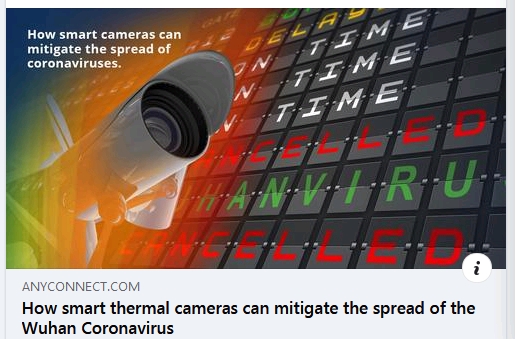
|
Wireless Health monitoring via the Cloud & Smart phone / Android
Wearables
INTRODUCTION
Smart health monitoring system is a vital topic and an important research field today. The new research is emphasizing on improving the quality and healthy life by designing and fabricating sensors which are either in direct contact with the human body (invasive) or indirect (non-invasive). One of the most promising applications of information technology is in healthcare management. Healthcare is moving from a reactive approach to a proactive approach characterized by early detection, prevention, and long-term management of health conditions. The monitoring system allows an individual to closely monitor their changes in vital signs and provide feedback, which helps to maintain an optimal health status. There is an extensive interest in using wireless technologies in-patient monitoring in various environments including hospitals and nursing homes. Due to wireless technology, it provides better treatments to patients though they are physically not present in hospital. This system is more useful for elderly people as they are more prone to chronic diseases and need continuous health monitoring. There are different products developed which supports the wireless health monitoring system and provide real time health condition of patient to doctor immediately.
The patient monitoring module is available which transmits the acquired vital signs through a wireless communication module to multiple personal computers1. There is also system with visualization mechanism that allows the doctor at hospital to monitor multiple patients in real time with long term monitoring data acquired from multiple sensors and works with standardized protocols such as IEEE 1451 and ISO IEEE 11073 for transmitting the acquired sensor data2. Wireless patient monitoring system is available that could allow patients to be mobile in their environment and the system with a pulse oximeter to measure blood oxygen concentration and the patient’s pulse, as well as a temperature sensor to keep track of the patient’s temperature3. Alert systems in terms of Simple Message System (SMS) and email to the doctors about the physiological parameters of the patients are existing4. Wireless architecture for human health monitoring system using the two sensors, temperature and pulse heart rate are available. These sensors output are interfaced with PIC microcontroller and data is transmitted to the node wirelessly using zigbee which pass the data to a Personal Computer5. Real-time monitoring and alarming system for patient health, especially for patients suffering from diseases during their normal life with an embedded microcontroller connected to a set of medical sensors and a wireless communication module is available, where the systems have ability to process real-time signals generated from biosensors and transmit the measured signals through the patient's phone to the medical center's server6.
System is also present to focus on the measurement and monitoring various biological parameters of patient's body like heart rate, oxygen saturation level in blood and temperature using a web server and android application, where doctor can continuously monitor the patient's condition in terms of data on his smart phone using an Android application8. Patient monitoring system is available to monitor the patient's vital parameters such as ECG, heart rate, SpO2, pulse rate and temperature and values are entered into a database and are uploaded into a web-based server manually9. The system using a set of collected vital signs (blood pressure, heart rate, oxygen saturation, and pulse rate, temperature and blood glucose level) from 30 hospitalized older adults with an overall accuracy of 98% is existing11. System that sends an automated SMS to the pre-configured Doctor's mobile number using a standard GSM module interfaced to the ARM microcontroller if a particular patient's health parameter falls below the threshold value is available12. Zigbee based sensor network for patient monitoring performance is analyzed through simulations13.
The characterization of cyber physical systems for healthcare applications is based on a comprehensive taxonomy involving eight different perspectives such as application, architecture, sensing, data management, computation, communication, security, and control/actuation for utilizing wireless sensor networks (WSN) or Cloud Computing14.The systems are available for Real-time ECG monitoring and arrhythmia detection using Android-based mobile devices but with the application available to only download15. System for tele-monitoring of patients, where the sensor data is relayed to the server using a smart device or a base station in close proximity is also available. The doctors and caregivers monitor the patient in real time through the data received through the server with such a type of system16. There is also system that uses a wireless sensor network to observe the after effects of medicine on patient suffering from chronic heart diseases in their home with the help of remote monitoring system and it eradicates the dependency on PC by using Wireless sensor networks17.
Wireless sensor network for health monitoring system by using ZigBee module and it is concluded that Programmable Interface Controller has been the low cost implementation used for recording and transmitting the bio-medical signals by wireless technology and very useful to the remote patients18. IP-enable internet and the visualization module19 of the server program graphically demonstrate the recorded biomedical signals on android mobile using Machine to Machine devices is available. The tele medical systems focuses on the measurement of health care parameters based on two different designs of a Body Area Network connected to Android Smartphone7,10. A real time heart monitoring system using android smart phone is also available
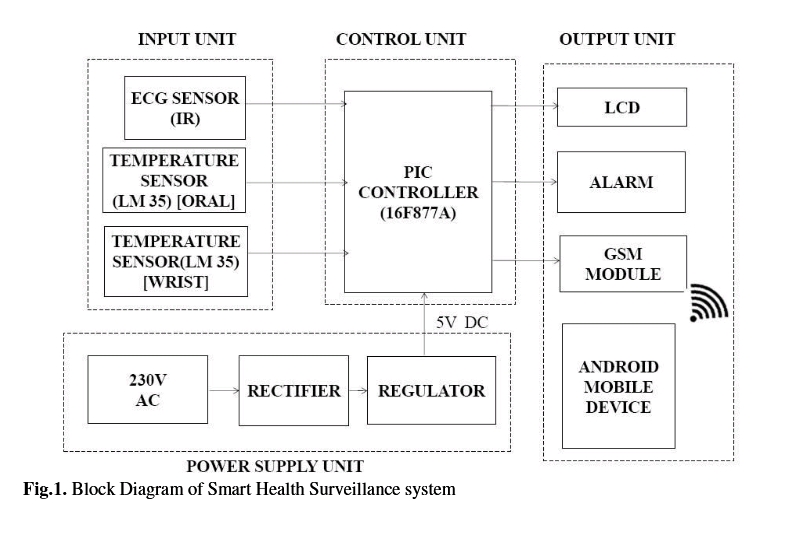
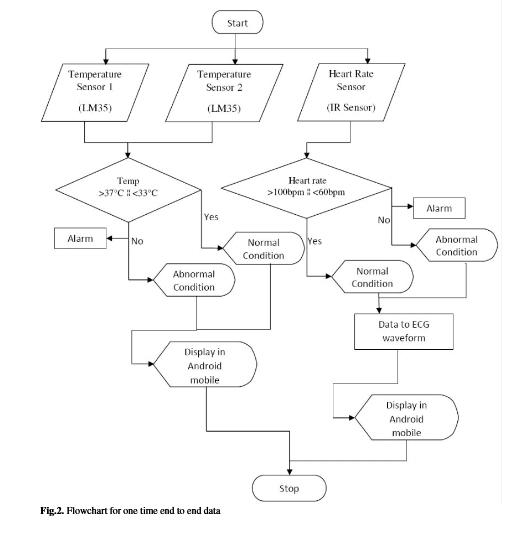
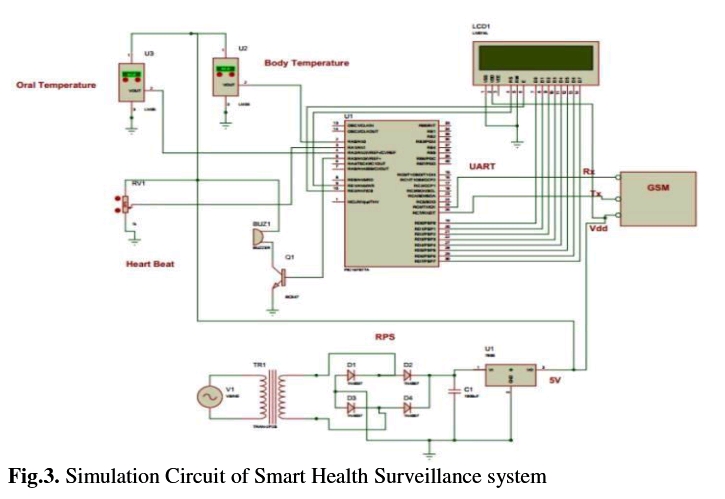
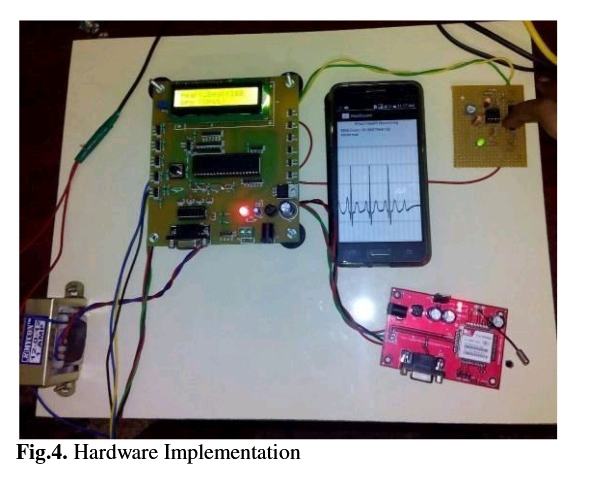
|
The Battlefield Air Targeting Man-Aided kNowledge (B.A.T.M.A.N.) program Flashing Indicator of Swimmer’s Health (FISH) is a personal underwater blood-oxygen monitor that detects potential blackout conditions and alerts users. This will help prevent shallow water blackouts experienced during water training events. |
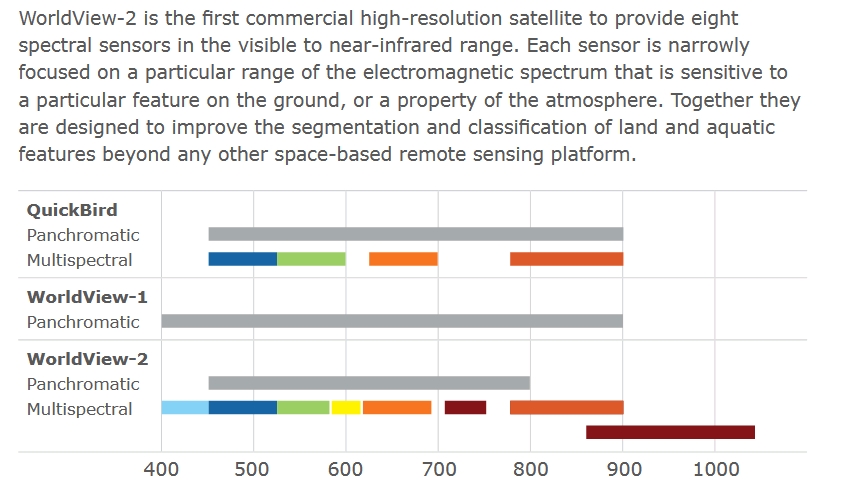 Managing city services and LULC based taxationUnderstanding LULC in urban environments is critical for maintaining city services, managing resources and collecting tax revenue. From maintaining degrading road networks, to monitoring water consumption to tracking the conversion of open space into impermeable surfaces, civil governments are constantly in need of continuously updated, detailed information.WorldView-2 enables agencies to synoptically map an entire urban area, and with increasingly automated feature extraction and classification capabilities, derive actionable information for managing scarce resources. Through a combination of spectral signatures and objected oriented methodologies, roads can be extracted and even classified by when they will need resurfacing. Storm water management fees, based on changes to the amount of impermeable surfaces, can be accurately measured, and properly assessed without the need for expensive ground-based surveying projects. Spectral changes in urban areas can also indicate construction projects such as the addition of sheds, decks and other outdoor structures that may not be properly permitted |
from 2010
WorldView-2 is DigitalGlobe’s second next-generation satellite, built by Ball Aerospace, and leveraging the most advanced technologies.
Like WorldView-1, WorldView-2 is equipped with state-of-the-art geolocational accuracy capabilities and will be only the second commercial spacecraft–after WorldView-1–equipped with control moment gyros, which enable increased agility, rapid targeting and efficient in-track stereo collection.
This advanced agility combined with an operating altitude of 770 km will enable it to collect nearly 1 million km2 of high-resolution imagery per day, and offer average revisit times of 1.1 days around the globe.
Complementing the large-scale collection capacity is WorldView-2’s high spatial and spectral resolution. It is able to capture 46 cm panchromatic imagery, and is the first commercial satellite to provide 1.84 m resolution, 8-band multispectral imagery.
The high spatial resolution enables the discrimination of fine details, like vehicles, shallow reefs and even individual trees in an orchard, and the high spectral resolution provides detailed information on such diverse areas as the quality of the road surfaces, the depth of the ocean, and the health of plants.
The additional spectral bands will also enable WorldView-2 to more accurately present the world as the human eye perceives it, creating a more realistic “true color” view of the world. |
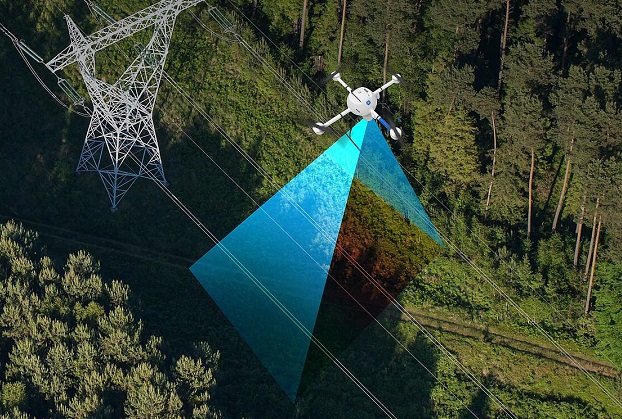 |
GE and Microdrones have formed a global licensing partnership, in which Microdrones will bring the GE industrial drone line
to market across six continents.
The tie up will match GE’s drone expertise with Microdrones’ survey equipment.
The partnership will have a particular focus on providing equipment and services for digital twins, digital terrain models, maps and other geospatial products in land surveying, construction, precision agriculture, mining, power line inspection, forestry management and other sectors.
|
|
Maxar Technologies has secured a contract for WorldView Legion satellite constellation capacity through an expanded agreement with an undisclosed defence and intelligence customer.
The multi-year, US$35 million contract extends the customer’s ability to directly task and download 30cm-class satellite imagery to its ground station from Maxar’s current constellation under the Direct Access Program.
The contract will also provide direct access to Maxar’s next-generation WorldView Legion satellites once they enter operations, as well as access to Maxar’s 3D data suite.
“Maxar is proud to continue our two-decade partnership with this important US ally,” said Tony Frazier, Maxar Executive Vice President of Global Field Operations.
“Maxar’s commercial satellite imagery and 3D data suite will enhance situational awareness and decision-making for the customer’s critical government missions.”
"The data provided by the Maxar satellites will support multiple operations such as public safety, environmental monitoring, oil and gas exploration, navigation technology, and location-based services."
|
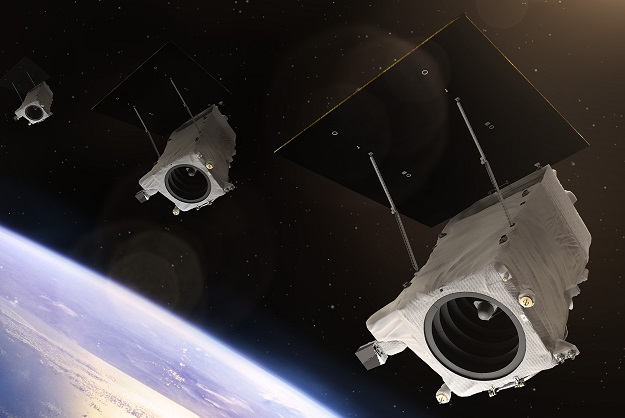 Starlink? Space X - Raytheon... Maxar Technologies preferred Raytheon Company as the satellite imaging constellation payload provider for delivering telescopes, detectors and combined electronics to SSL in October 2017. DigitalGlobe, which was acquired by Maxar Technologies in October 2017, placed a contract with SpaceX for the launch of WorldView Legion satellites on board Falcon 9 rockets in March 2018. |
|
Portable Brain machine interface
There has been an increase in research interest for brain-computer interface (BCI) technology as an alternate mode of communication and environmental control for the disabled, such as patients suffering from amyotrophic lateral sclerosis (ALS), brainstem stroke and spinal cord injury.
Disabled patients with appropriate physical care and cognitive ability to communicate with their social environment continue to live with a reasonable quality of life over extended periods of time.
Near-infrared spectroscopy is a non-invasive technique which utilizes light in the near-infrared range (700 to 1000 nm) to determine cerebral oxygenation, blood flow and metabolic status of localized regions of the brain.
In this paper, we describe a study conducted to test the feasibility of using multichannel NIRS in the development of a BCI. We used a continuous wave 20-channel NIRS system over the motor cortex of 5 healthy volunteers to measure oxygenated and deoxygenated hemoglobin changes during left-hand and right-hand motor imagery.
We present results of signal analysis indicating that there exist distinct patterns of hemodynamic responses which could be utilized in a pattern classifier towards developing a BCI. We applied two different pattern recognition algorithms separately, Support Vector Machines (SVM) and Hidden Markov Model (HMM), to classify the data offline. SVM classified left-hand imagery from right-hand imagery with an average accuracy of 73% for all volunteers, while HMM performed better with an average accuracy of 89%. Our results indicate potential application of NIRS in the development of BCIs.
|
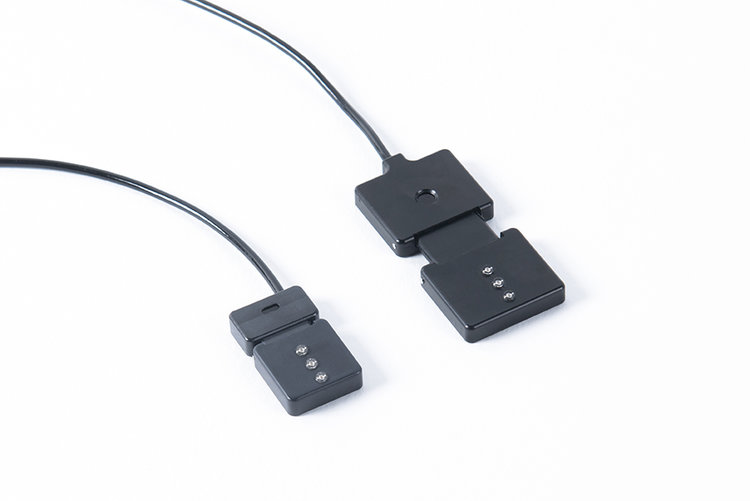 |
PortaLite Brain machine interface
|
|
frontiers - Preparation of Graphene Oxide-Embedded Hydrogel as a Novel Sensor Platform for Antioxidant Activity Evaluation of Scutellaria baicalensis
Soft ionic-hydrogel electrodes for electroencephalography signal recording
September 2010 - Hydrogel-based photonic sensor for a biopotential wearable recording system
|
Rabbit eyes fixed with hydrogel - Nanowires
A few years ago, crucial graphene oxide (GO) features such as the carbon/oxygen ratio, number of layers, and lateral size were scarcely investigated and, thus, their impact on the overall optical biosensing performance was almost unknown. Nowadays valuable insights about these features are well documented in the literature, whereas others remain controversial.
Moreover, most of the biosensing systems based on GO were amenable to operating as colloidal suspensions. Currently, the literature reports conceptually new approaches obviating the need of GO colloidal suspensions, enabling the integration of GO onto a solid phase and leading to their application in new biosensing devices.
Furthermore, most GO-based biosensing devices exploit photoluminescent signals. However, further progress is also achieved in powerful label-free optical techniques exploiting GO in biosensing, particularly using optical fibers, surface plasmon resonance, and surface enhanced Raman scattering. Herein, a critical overview on these topics is offered, highlighting the key role of the physicochemical properties of GO. New challenges and opportunities in this exciting field are also highlighted.
|
|
Who is Charles Lieber?
According to court documents, since 2008, Dr. Lieber who has served as the Principal Investigator of the Lieber Research Group at Harvard University, which specialized in the area of nanoscience, has received more than$15,000,000 in grant funding from the National Institutes of Health (NIH) and Department of Defense (DOD).
These grants require the disclosure of significant foreign financial conflicts of interest, including financial support fromforeign governments or foreign entities. Unbeknownst to Harvard University beginning in 2011, Lieber became a“Strategic Scientist” at Wuhan University of Technology (WUT) in China and was a contractual participant in China’s Thousand Talents Plan from in or about 2012 to 2017.
China’s Thousand Talents Plan is one of the most prominent Chinese Talent recruit plans that are designed to attract, recruit, and cultivate high-level scientific talent infurtherance of China’s scientific development, economic prosperity and national security.
These talent programsseek to lure Chinese overseas talent and foreign experts to bring their knowledge and experience to China andreward individuals for stealing proprietary information.
Under the terms of Lieber’s three-year Thousand Talentscontract, WUT paid Lieber $50,000 USD per month, living expenses of up to 1,000,000 Chinese Yuan(approximately $158,000 USD at the time) and awarded him more than $1.5 million to establish a research lab at WUT.
In return, Lieber was obligated to work for WUT “not less than nine months a year” by “declaring internationalcooperation projects, cultivating young teachers and Ph.D. students, organizing international conference[s],applying for patents and publishing articles in the name of” WUT.The complaint alleges that in 2018 and 2019, Lieber lied about his involvement in the Thousand Talents Plan andaffiliation with WUT
Charles Lieber arrested Tuesday, January 28, 2020 Dept of Justice
Kinked p-n Junction Nanowire Probes for High Spatial ResolutionSensing and Intracellular Recording
|
write in / read out capable?
|
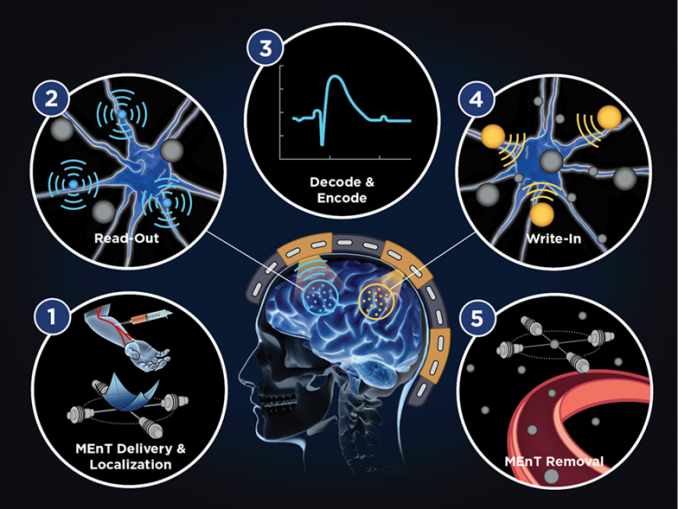 |
National institute of Health - Brain initiative
Organoids, grown in laboratory settings to resemble parts of the developing human brain, hold great potential for shedding light on human brain function and disease.
Researchers are working to achieve key bioengineering advancements, including successful vascularization of brain organoids, generating the full complement of cell types present in a human brain, and recording and modulating neural activity in organoids.
These anticipated advances in bioengineered human brain modeling research may raise ethical questions about the moral status of large, complex human brain organoids and ethical boundaries on manipulating increasingly realistic engineered brain models.
In this project, Dr. Hyun will lead proactive ethical discussions among ethicists and the neuroscientists conducting this cutting-edge work to develop greater awareness and understanding of these ethical implications and to inform future management of ethical issues that may be unique to this novel area of brain research.
|
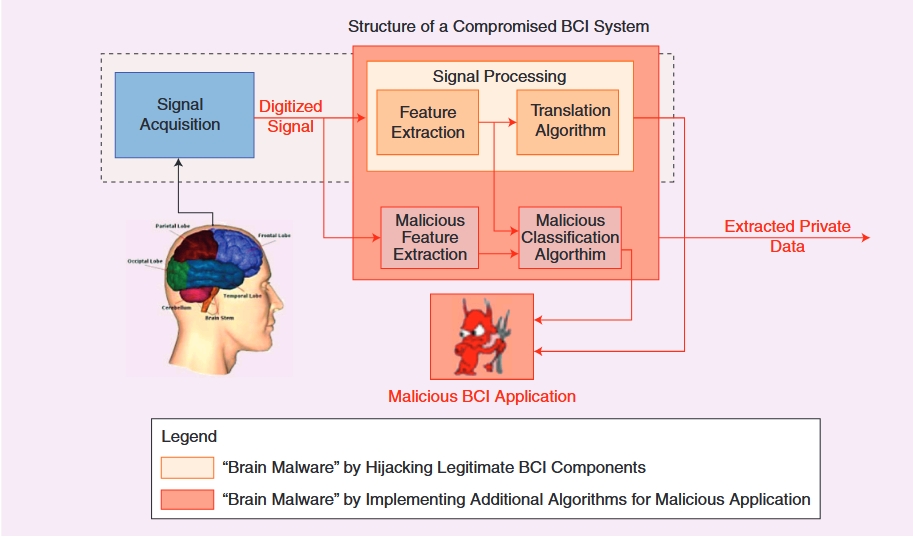 |
In recent years, however, BCIs have seen a surge in popularity in fiction, gaming, entertainment, and market-ing.
There are currently several consumer-grade BCI-based systems (e.g., Emotive System [5],
NeuroSky [6], and g-tec Medical Engineering [17]) offering relatively low-cost EEG-based BCIs and software development kits to support and facilitate expansion of BCI-enabled applications.
The supported applications can broadly be classified into: a) accessibility tools, such as mind-controlled mouse and keyboard, b) hands-free arcade games, such as Brain Bats, mind-controlled Pong game [18], and c) “serious games,”i.e., games with purpose other than pure entertainment, such as attention and memory training [19].BCIs are also emerging as a tool for personalized enter-tainment.
It has been known for some time that the ability to make inferences about a user’s cognitive processes and emotional responses, such as satisfaction, boredom, or confusion, enables the development of more adaptive and responsive entertainment products.
There already exist several gaming consoles that use pressure, motion, or gaze sensors to make inferences about a user’s behavioral states [7]. Very recently researchers from Taiwan have pro-posed a method of predicting success of an online game by analyzing a user’s electromyographic (EMG) signals (i.e., electrical signals produced by a user’s skeletal muscles) over the first 45 minutes of the game [9].
In addition to the gaming and entertainment indus-tries, in recent years market research companies have also shown an increased interest in BCI-enabled tech-nologies. In 2008, for example, the Nielsen company has introduced the Mynd, an EEG-based BCI device specifically developed for market research [7]. It is rea-sonable to expect more and more information about users’ cognitive and behavioral processes, as well as their emotional states will be extracted (with and without permission) for a variety of entertainment and marketing studies, as BCI-enabled applications become more widespread
|
|
Examples of “Brain Malware” Information Misuse
Private information about BCIs users, extracted using “brain malware,” may be of interest to multiple parties, those using it for greater good and potential improve-ment of the quality of human lives, but also to those using it to increase their own (financial) gains, as well as those using it simply to harm others. One can easily imagine the following examples of concerning BCIs use:
Example 1: As exemplified in Farahaney’s work [21], an access to an individual’s memories and emotional responses might be used by police enforcement and government agencies during criminal investigation, as well as for crime and terrorism prevention.
Example 2: BCI-recorded neural signals may be used in a variety of entertainment and relaxation applica-tions. A person’s emotional response and satisfaction/annoyment level may, for example, be used to provide better (more accurate) music and/or movie recommen-dations. Similarly, information about a person’s activity and anxiety levels may be used to tailor a more person-alized training routine or a relaxation session.
Example 3: Personal information, extracted from neural signals, could also be used for targeted advertisement, where in addition to (or instead of) information about a person’s activities on the Internet, an advertiser/retailer would have a real-time access to a person’s level of inter-est, satisfaction, or frustration with the presented material.
Example 4: On the other end of the spectrum, however, extracted information about a person’s memories, prejudic-es, beliefs, or possible disorders could be used to manipu-late a person or coerce her/him into doing something.
Example 5: Finally, extracted neural information could also be used to cause physical or emotional harm to a person.
Examples of such actions have already been observed in the literature. Denning et al. [35], presented the case of individuals who placed flashing animations on epilepsy support webpages, eliciting sei-zures in some patients with photosensitive epilepsy
|
|
Programmable Synthetic Hallucinations
In addition to his continuing work in visual effects, he also branched out into the production of transmedia and IMmedia, in an effort to break through the limits of the mediated experience. This quest brought him to the MIT Media Lab, where he built a range of next-generation displays for his master's thesis, and demonstrated a successful prototype of Programmable Synthetic Hallucinations for his PhD, utilizing the bio-physiological mechanics of hallucination generated in the human brain to display virtual information directly in the visual field. BIO |
Universities suchas NYU are currently working to make a functional version of the Holodeck ("Holodeck" 2016),and researchers around the globe use the term "holodeck" to describe a collection or ecosystemof display and haptic solutions, such as previously described, to approximate its functionalities.
But what if we could create a true quantum leap in display technology and develop a form of information display that isn't an extrapolation of a past or current interaction model?
What if wecould leapfrog into a much broader future?
In Philip K. Dick's Do Androids Dream of Electric Sheep (1968), characters interact with afictional device known as the Penfield Mood Organ. This home appliance allows one to "dial"any mood one wishes to have. It is, essentially, an electroceutical neurostimulation device that suggests a possible future solution to a visual information display.
If, fictionally, some form ofinformation-carrying energy can be passed into the brain and affect the emotional centers, couldsome similar process be investigated, instantiated in the real world, and utilized to createpercepts in the visual cortex that would be interpreted by higher attentional areas as if thestimulus were coming from the eye, and eventually be perceived as imagery by the user?
This simple question led to the birth of a new field of inquiry, open to all, currently termed Programmable Synthetic Hallucinations.
|
a working prototype? nearly.
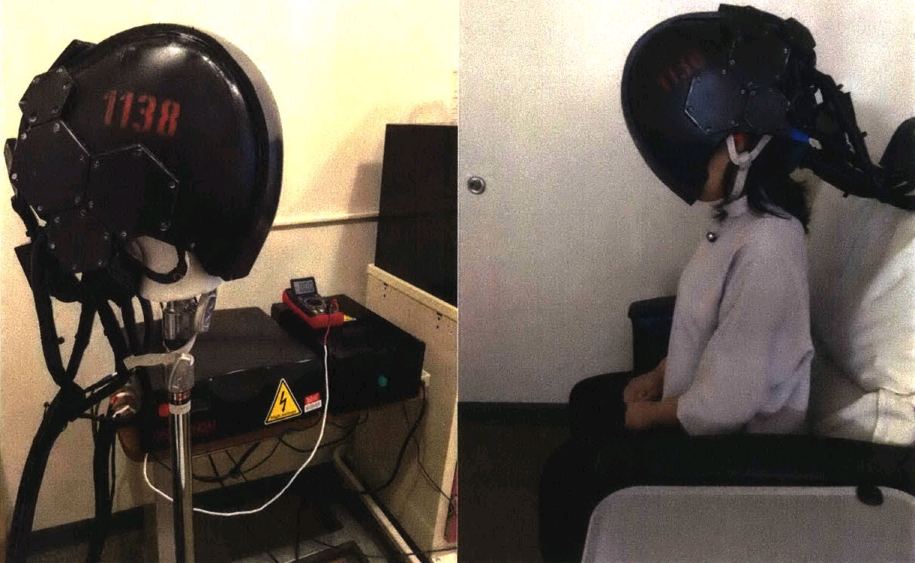
Haptic suits...robotic Avatar projection - a surrogate in physical reality?
Remote instruction
Imagine being able to remotely control machinery, or just help out family fully from thousands of miles away - it would change so much about work, commuting and social interaction.
This is one area that’s particularly interesting to Campbell is using embodiment research to aid telepresence or telerobotics, which is the use of virtual reality or augmented reality (AR) to do just that.
“I’m fascinated by Remote Expert, which is being pioneered by DAQRI,” he told us. “This allows an expert in a field to be remotely placed in augmented reality beside a non-expert to perform a complex task. DAQRI are looking at medical and industry fields to apply this technology, but you can imagine lots more applications.”
Tech Radar - Beyond haptics: blurring the line between your virtual avatar and your body
The Dawn Avatar cafe in Minato Ward, Tokyo will feature five robots that are roughly 3.9 feet tall that will take orders and serve food. The robots transmit audio and video over the internet so they can be controlled by people with conditions such as amyotrophic lateral sclerosis (ALS) remotely from their homes. Ten remote workers with ALS will get Ą1,000 (~$8.79) an hour in wages for controlling the robots. source
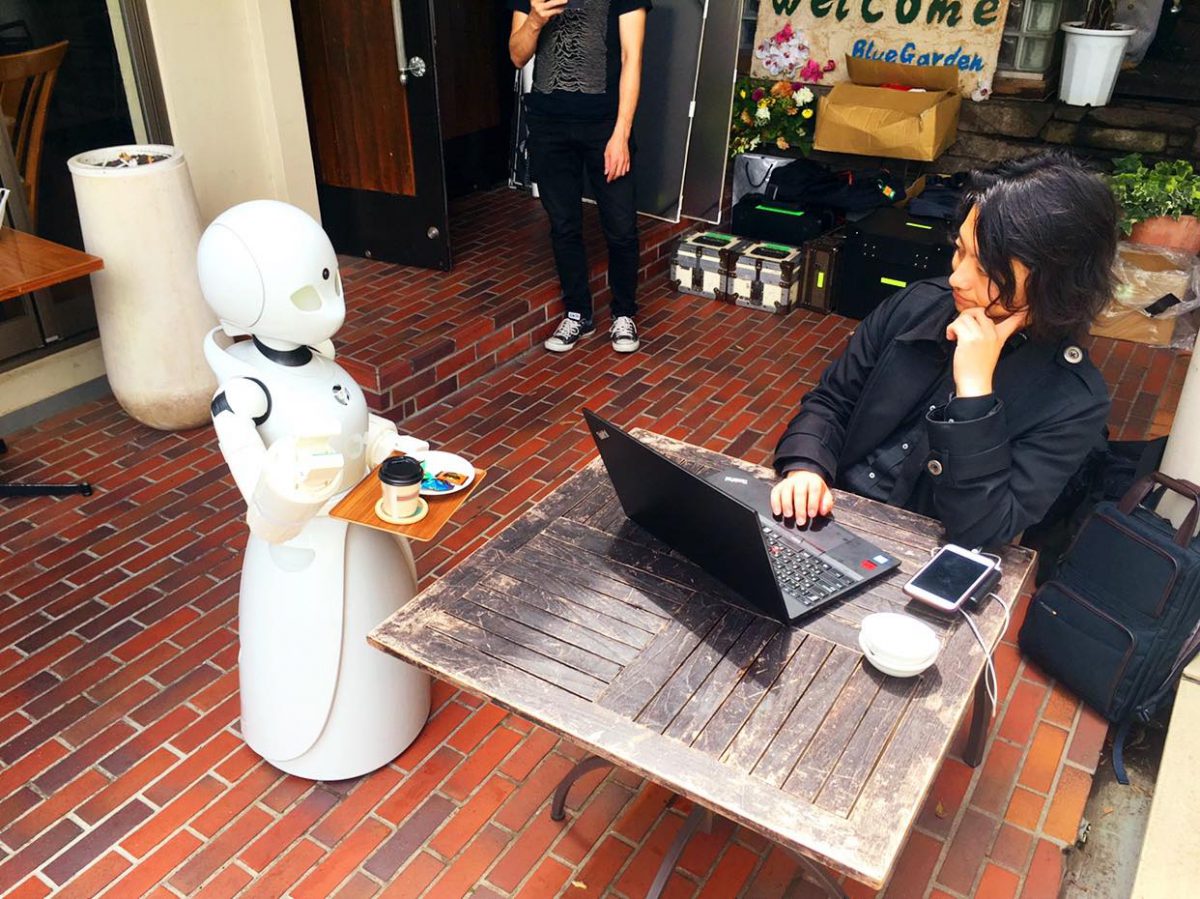
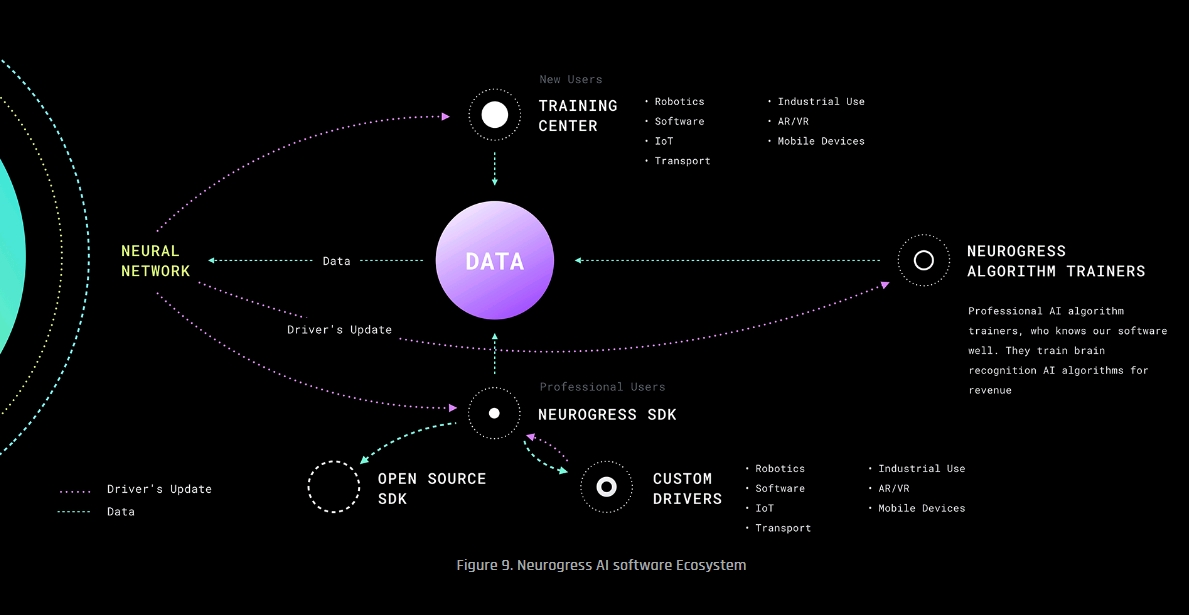
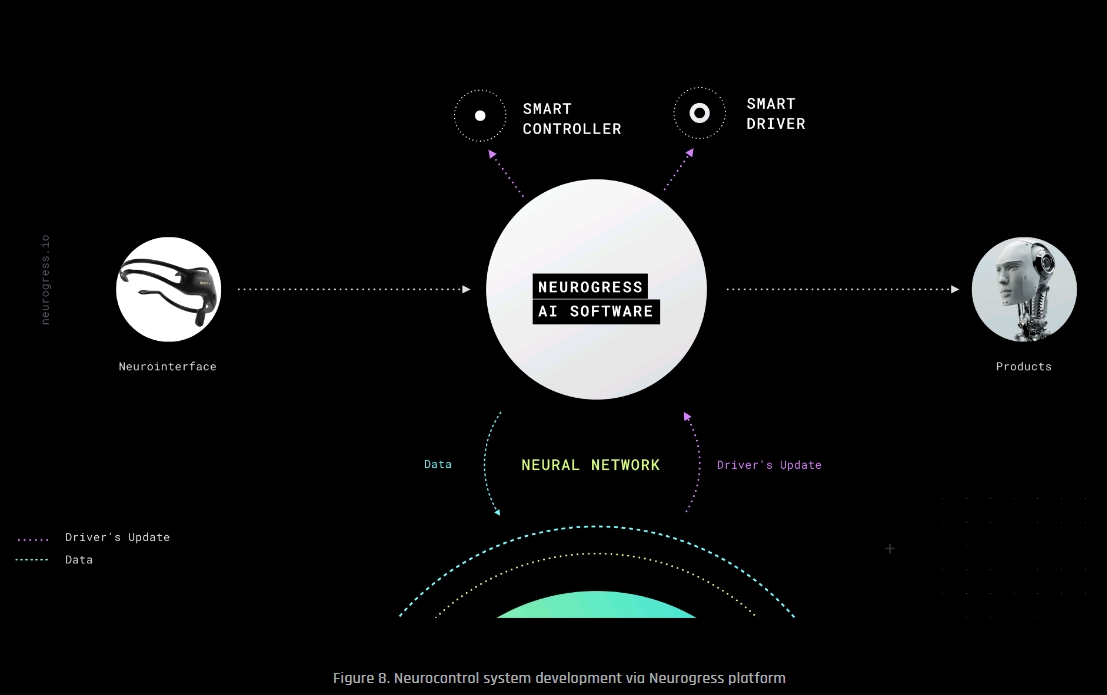
|
The company experiments with neurocontrolled robots and plans to integrate its neurocontrol software in collaboration with one of the manufacturing leaders to create a full-fledged robot-android that can be controlled via the neurointerface. This opens up exciting, futuristic possibilities.
Imagine sitting at home, looking through neurointerface glasses, seeing what a robot sees and remote-controlling it. Imagine a race of flying or running neurocontrolled robots. Imagine a complete exoskeleton controlled by the power of thought. The potential scope for this technology is mind-boggling
|
“humans as sensors”
Emerging or underutilizedmethodologies and technologies such as thermal sensing, digital soil mapping, citizen science, UASs,cloud computing, mobile mapping, or the use of “humans as sensors” will continue to enhance the relevance of HEI research in achieving sustainable development goals and driving the science of HDGC further.
Keywords: remote sensing; human–environment interactions; socio-ecological systems; human dimensions of global change; coupled natural-human systems; people and pixels."
"...recent advances inmicro-satellite, unmanned aerial systems (UASs), and sensor technology are opening new avenues of integration of remotely sensed data into Human Environmental Interaction [HEI] research at scales relevant for decision-making purposes that simultaneously catalyze developments in HDGC research.
Plant sensors? or Human?
Synthetic biology
The practices of synthetic biology are being integrated into ‘multiscale’ designs enabling two-way communication across organic and inorganic information substrates in biological, digital and cyber-physical system integrations. Novel applications of ‘bio-informational’ engineering will arise in environmental monitoring, precision agriculture, precision medicine and next-generation biomanufacturing. Potential developments include sentinel plants for environmental monitoring and autonomous bioreactors that respond to biosensor signaling. As bio-informational understanding progresses, both natural and engineered biological systems will need to be reimagined as cyber-physical architectures. We propose that a multiple length scale taxonomy will assist in rationalizing and enabling this transformative development in engineering biology.
[snip]
Biosensors
are a class of genetically encoded biological molecules, proteins, cells, or cell consortia that can be used to detect and respond to target ligands with high specificity and sensitivity6,7,8,9. Biosensors can be comprised of protein, RNA, or DNA structures, depending on the application and its requirements, and can be either naked molecules, or functional within cells and their native regulatory components.
Biosensors can also be comprised of whole cells 10, synthetic co-cultures 11, or non-genetically encoded biosensors interfaced with cells 12.
In genetically encoded biosensors such as nucleic acids and protein, detection and signal actuation domains are typically connected so that the binding of each target molecule to a sensor domain can initiate signal output by inducing a conformational change in the sensor.
The range of molecules that biosensors can detect is incredibly diverse, representing the broad capabilities of biochemistry to interact at the atomic, molecular, organic/inorganic, cellular, and multicellular scales.
Depending on the biosensor architecture, output signals could be gene expression, enzyme activity, light, fluorescence, or electron release 6.
Due to these broad capabilities, target specificity, and natural interface with living systems, biosensors are one of the keys to the future of bio-informational engineering, which will enable two-way communication between human digital technology and biological processes.
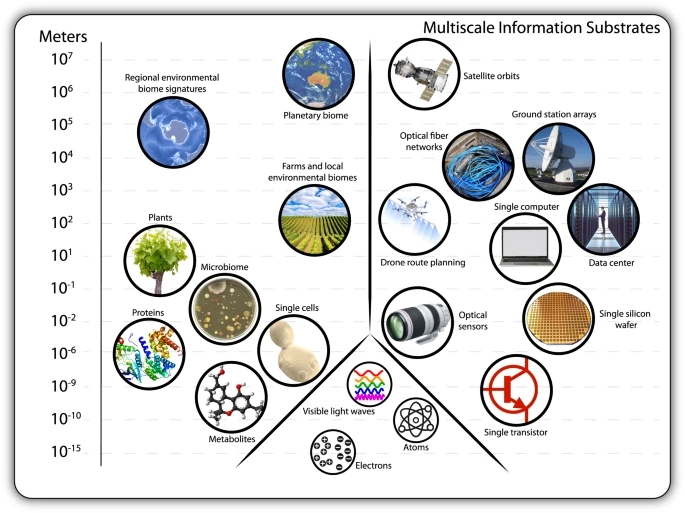
|
[paraphrased]
A product of the National Reconnaissance Office (NRO), Sentient is (or at least aims to be) an omnivorous analysis tool, capable of devouring data of all sorts, making sense of the past and present, anticipating the future, and pointing satellites toward what it determines will be the most interesting parts of that future. That, ideally, makes things simpler downstream for human analysts at other organizations, like the NGA, with which the satellite-centric NRO partners.
The agency has been developing this artificial brain for years, but details available to the public remain scarce.
“It ingests high volumes of data and processes it,”
“Sentient catalogs normal patterns, detects anomalies, and helps forecast and model adversaries’ potential courses of action.”
The NRO did not provide examples of patterns or anomalies, but one could imagine that things like “not moving a missile” versus “moving a missile” might be on the list.
Those forecasts in hand, Sentient could turn satellites’ sensors to the right place at the right time to catch ill will (or whatever else it wants to see) in action.
“Sentient is a thinking system,” says Deputy director of NRO’s Office of Public Affairs Karen Furgerson.
|
Most of the orbital infrastructure built by the United States isn’t for war but for spying. The first images of the Earth taken from space, or at least from low Earth orbit, were produced in 1959 by a US reconnaissance satellite, codenamed Corona. The Geospatial Intelligence Agency, which interprets satellite imagery, has a staff as large as the Defence Intelligence Agency and occupies one of the largest headquarters buildings of any military or intelligence agency in the world, second only to the Pentagon. It was the GIA, along with the CIA, that provided funding for Google Earth. US reconnaissance satellites are essentially giant telescopes, but instead of being pointed out at quasars or searching for the universe’s origins, they look down on Earth. In the sky-blue office complexes of the National Reconnaissance Office in Chantilly, Virginia, information gathered by US satellites is fed into an algorithm called Sentient. In 2013, when the NRO launched its reconnaissance satellite USA-247, it produced a logo for the launch that depicted an octopus embracing the globe; the tagline read: ‘Nothing is beyond our reach.’ It was a moment beyond the imaginative capacities even of hippie satellite conspiracy theorists. |
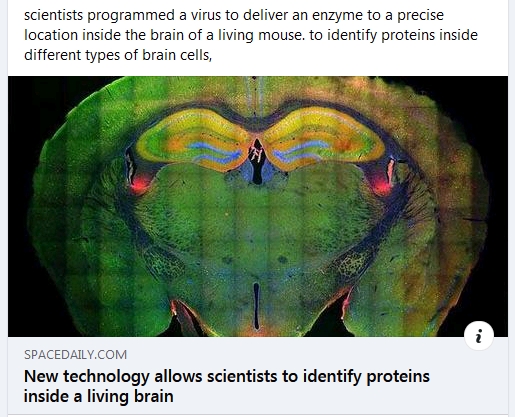
|
Real time brain protein monitoring
Scientists program a virus to deliver an enzyme to a precise location inside the brain of a living mouse to identify proteins inside different types of brain cells.
"The virus essentially acts as a message that we deliver," Kozorovitskiy said. "In this case, the message carried this special soybean enzyme. Then, in a separate message, we sent the green fluorescent protein to show us which neurons were tagged. If the neurons are green, then we know the soybean enzyme was expressed in those neurons."
Genetic tagging has led to great advances in the study of DNA and RNA, but scientists have struggled to target and tag proteins.
Genes and RNA can be sequenced and amplified in order to identify a cell's genetic building blocks, but the same techniques don't work for proteins.
"We have been able to gain a lot of traction with genetic and RNA sequencing, but proteins have been out of the loop," Kozorovitskiy said.
"Yet everyone recognizes the importance of proteins. Proteins are the ultimate effectors in our cells. Understanding where proteins are, how they work and how they work relative to each other is really important," Kozorovitskiy said.
Researchers estimate their new technique, mass spectroscopy-based proteomics, will allow neurobiologists to identify the full spectrum of proteins at work along vital brain circuits.
|